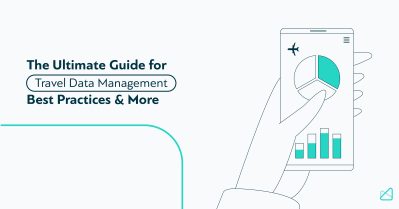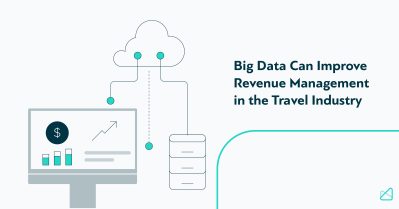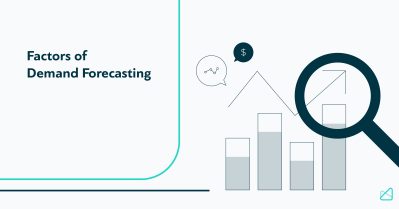3 Ways How Companies Use Big Data

“Data is the new soil because, for me, it feels like a fertile, creative medium. Over the years, online, we’ve laid down a huge amount of information and data, and we irrigate it with networks and connectivity.”
David Mccandless
2020 statistics reported by bornfight.com show that 90% of the world’s data has been created in the last two years, and over $180 billion (USD) is spent per annum on Big Data analysis. These are staggering numbers. However, as the bornfight.com team notes, despite these statistics, there are still companies that do not use this information as an opportunity or reason to invest in the policy and practice of the collection, storage, transformation, and analysis of all of the data that forms part of the Big Data paradigm.
Before considering examples of ways companies can leverage Big Data as the primary driver of business growth and innovation, let’s take a look at a brief definition of the Big Data paradigm.
What is Big Data?
In summary, Big Data can be defined as voluminous, diverse sets of data. A definition of Big Data is not complete without noting that this archetype incorporates the three “V’s” of data: Volume, Velocity, and Variety.
In other words, Big Data includes massive volumes of data (petabytes and exabytes of data), consists of a wide variety of different types of data, including structured, semi-structured, and unstructured raw data, and its velocity is high, or its rate of change is extraordinary. Simply stated, these data volumes grow exceptionally rapidly.
How companies can use Big Data
There are a wide variety of current use cases demonstrating how the adoption of the Big Data paradigm by all corporate stakeholders can and will drive business growth and innovation across all industries, ensuring that the organization remains a market leader.
Therefore, let’s consider several examples of specific industries that have adopted the Big Data construct to leverage innovative growth and development across the overarching company structure.
1. How do companies use Big Data for communication?
Before the rapid growth of the big retail chain stores, online shopping, and the rapid adoption of digital marketing, people used to walk to their corner store or bakery to buy basic essentials like bread and milk. For most people this journey was a pleasure because the store owner and family used to have a personal relationship with their clients. Therefore, as you walked into the shop, the owner was already packing your goods. They knew what you wanted without having to ask. Ergo, you appreciated the personal service and wouldn’t think of shopping elsewhere.
Big retailers and eCommerce stores do not have the means or wherewithal to develop a personal relationship with clientele. This lack of personal service impacts brand loyalty. Assuming that a loaf of bread is the same quality at all retail supermarkets, apart from price, there is very little reason to shop at a particular store.
The personalized customer relationship and customer service is returning with the rise of Big Data. Succinctly stated, by investing in Big Data to analyze customer spending trends and patterns, companies can target their communications based on customer shopping habits.
2. How do companies use Big Data for advertising?
Big Data is revolutionizing marketing and advertising. A Forrester study quoted by a forbes.com article “found that 44% of B2C marketers are using Big Data and analytics to improve responsiveness” to advertising campaigns. Additionally, 36% of B2C marketers are using analytics and data mining [by a data scientist] to gain greater insights into relationship-driven strategies.”
Additionally, modern-day marketing has dramatically changed over the last decade. There has been a shift in advertising campaigns to emphasize how the brand or product can enhance consumers’ lives by purchasing the product. Consequently, advertising must be more targeted and more focused. Big Data and the insights derived from this data play a large role in keeping marketers informed about the ever changing consumer trends, providing an evidence-based solution for the challenge of how best to attract a specific subset of the brand’s target audience.
3. How can companies use Big Data in B2B?
B2B (or Business-to-Business) companies are organizations that transact with other companies such as a wholesaler or manufacturing concern and a retailer. A prime example of a B2B online retailer is Amazon Business, providing business customers with the pricing, convenience, and selection of all Amazon products. In other words, small businesses can register with Amazon, create a business profile, set up a list of products, and sell to all of the existing customers already purchasing from Amazon.
Amazon Business utilizes the insights derived from its collected data to understand its customers. For instance, should Amazon Business wish to create a loyalty program to increase its customer base, these insights will show trends and patterns focusing on what type of loyalty program will attract the customers it is aiming for with this program, driving the division’s strategy in this regard.
How companies use Big Data successfully
Now that we have considered how business organizations can use Big Data, let’s consider several use cases of how companies in different sectors or industries have implemented a successful Big Data architecture, model, and method, leveraging meaningful insights as an integral part of the strategic decision-making process.
1. How do travel companies use Big Data?
The travel sector has widely adopted Big Data, Artificial Intelligence, and machine learning to increase sales with the use of systems such as recommender systems, online reputation management, and revenue management.
For instance, let’s assume you are an online travel agent, and you aim to target millennial travelers or digital nomads.
In summary, digital nomads are individuals who leverage the online space to generate an income while traveling to different countries and regions across the globe. These nomads usually spend about three months in one place, or if a tourist visa allows, before moving to another country and so on. They typically book airplane, bus, and train tickets as well as accommodation online. Therefore, when they use your website to book a plane ticket to a new region or country, your website’s recommender system takes this information and suggests additional options like accommodation, local tours, sights to see, and things to do while visiting their new destination, driving up your sales and increasing revenue.
A second, typical use case for the Big Data for B2B hotel clients is offered by Hotelmize, our Big Data platform that utilizes Big Data technology to store and analyze all our client’s bookings to improve our Room Mapping matching algorithm and to provide our clients with detailed insights for the hotel booking niche. The average size of the data for all our clients is about 10M records of 24GB data for each record. Additionally, we have more data sources that we use as part of our analysis process, increasing the total data size to 250GB.
2. How do real estate companies use Big Data?
In his article titled “The Top PropTech Trends: 6 Technologies Disrupting the Property and Real Estate Industry,” Bernard Marrs notes that, while “no industry is immune to technical advances… real estate is one niche that has been slower to adopt trends.”
However, it would seem as though the real estate industry has caught up, and PropTech (property technology) is growing rapidly. Technological advances like Big Data, Artificial Intelligence and machine learning, and virtual and augmented reality are changing the way people interact with real estate brokers and buy and sell properties.
Because the main topic of this discussion is how real estate companies use Big Data, let’s dive into a few ways real estate companies like Zillow, Redfin, and Trulia are utilizing Big Data to disrupt the real estate industry.
Compile and collect data to derive predictive analytics
These companies collect, process, and transform data on buying and selling trends, demographic data, traffic data, and consumer survey results to offer insights on pricing, home-value trends, and forecast value per region, town, and neighborhood. These analyses help real estate agents better understand their customers’ needs; thereby, helping them formulate personal offers that will attract a subset of their target audience to buy the residential accommodation they have to offer.
Historical and forecast trends on different building systems
Big Data is used to derive historical and forecast trends for property owners and managers, improving the maintenance cycle by analyzing electric, HVAC, fire and life safety, utilities, and telecommunications data to implement a proactive instead of reactive maintenance program.
3. How do financial companies use Big Data?
Fintech (Financial Technology) is the overarching term that is used to describe the latest technical advances, including Big Data, machine learning (ML), and Artificial Intelligence (AI), specific to the financial industry.
Succinctly stated, the massive volumes of data collected under the Big Data ambit form the foundation for technologies such as AI and ML, which drive the cyber and fraud prevention and detection strategies across the financial industry.
Identity theft and credit card fraud statistics report that in 2019, there were 650 572 cases of identity theft. Circa 165 million records containing personal data were exposed through data breaches. And credit card fraud was the most common type of identity theft and more than doubled between 2017 and 2019.
For instance, JC Morgan Chase, one of the world’s most prominent financial institutions, uses predictive analytics driven by machine learning models for the near real-time analysis of credit card transactions to identify trends and patterns to red flag anomalies used to reduce credit card fraud.
By way of expanding on the use of AI and ML for the detection of credit card fraud, Lukas Frei published an article titled “Detecting Credit Card Fraud Using Machine Learning,” where he studied a sample set of data anonymized and published online by Kaggle. This dataset contained 284 807 transactions, with the largest transaction value of $25 691 and a mean value for each transaction of $88.35. Lastly, Frei assumed that most of these credit card transactions would be legitimate. The ML model proved this assumption correct, with 98.83% of the transactions not fraudulent and only 0.17% fraudulent.
4. How do insurance companies use Big Data?
The InsurTech or insurance technology revolution is fundamentally driven by the Fourth Industrial Revolution and its associated technologies, including Big Data, machine learning, and Artificial Intelligence.
The insurance industry and its adoption of the latest technologies have grown and developed in parallel. The pwc.com report titled “This is InsurTech’s moment. Will insurers seize the opportunity?” states the following:
“Each time there’s been a major leap in technology, the industry has responded with new products, new methods of distribution and new ways to evaluate risk.”
One of the predominant ways insurance companies use Big Data is to collect real-time telemetric data from the motor vehicle drivers to identify at-risk behavior or good driving habits to either increase monthly premiums or provide discounts or financial rewards for responsible driving, respectively.
Lastly, online Insurtech companies like QuanTemplate, a London-based company established in 2011, use Big Data as a foundation for their suite of easy-to-use, high-performance tools to manage, query, and visualize insurance data.
Final thoughts
These are just a few of the many ways business organizations worldwide are utilizing the Big Data paradigm to drive operational growth and innovation. Lastly, this trend is set to continue as the world moves further into the Fourth Industrial Revolution. In this age, rapid technological advancements in Big Data, Artificial Intelligence and machine learning, quantum computing, cloud-based infrastructure, robotics, and autonomous vehicles are occurring and will continue indefinitely.
Subscribe to
our newsletter
Yay! You are now
subscribed to our
newsletter
Mize is the leading hotel booking optimization solution in the world. With over 170 partners using our fintech products, Mize creates new extra profit for the hotel booking industry using its fully automated proprietary technology and has generated hundreds of millions of dollars in revenue across its suite of products for its partners. Mize was founded in 2016 with its headquarters in Tel Aviv and offices worldwide.
Related Posts

The Ultimate Guide for Travel Data Management: Best Practices & More
14 min. As data becomes increasingly important across verticals, it’s essential to understand its role in the travel industry. Most importantly, understand how to leverage it to make informed business decisions and improve your internal processes and travel experience. After all, data will play a pivotal role in helping the tourism sector’s market volume reach […]

Big Data Can Improve Revenue Management in the Travel Industry
4 min. Big data has become a vital asset in many different industries in recent years. With so many people sharing their information online and platforms logging customer behavior, there’s a need for an efficient way to process all that raw information. The travel industry is no different, as owners and managers are constantly discovering […]

Demand Forecasting: Factors Affecting It, Why It is Important, & More
5 min. Markets of all sizes around the globe are becoming oversaturated. Meanwhile, harsh competition has made them volatile as well. Consumers have access to more information, which tremendously helps them in making the right purchasing decision. All of it makes the future uncertain for businesses. How does a business thrive and achieve objectives in […]